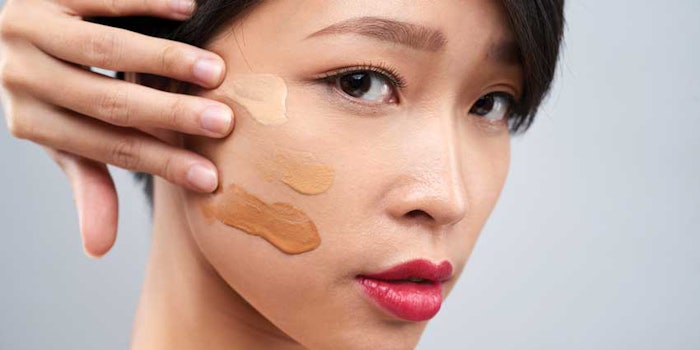
Color cosmetics have experienced the same consumer demands as other beauty categories; for example, formulas with “clean,” organic and natural claims. In addition, users expect long wear properties and a good, lightweight skin feel—not to mention the basics of good pigment dispersion. During the 2019 SCC Annual Meeting and technology showcase, color cosmetic expert Jane Hollenberg of JCH Consulting spoke on these and other related areas.
Free-from Claims and Foundation Basics
Hollenberg opened with a frank criticism over recent label claims: “Clean’ is totally bogus. [B]rands like Goop are making claims with no basis in fact. That pretty much has gone the way of all things ... The ‘clean’ claim really pains me. [Also, ‘sulfate-free’] but sulfate is an anion and has nothing to do with anything. I believe that silicone on the skin is one of the more inert chemicals. It’s even used in contact lenses and allows air to pass through” (see “Safe Synthetics & Clean Beauty,” DM9).
The Challenges of “Clean” Alternatives
She continued with concerns over glycols and parabens: “Yes, there are some studies [flagging these ingredients but] they are flawed and various bodies have declared these ingredients safe over and over again; but most of us have stopped using them, to our detriment.”
She added that formulators knew how to use the ingredients in safe and effective ways: “[But] now, we’re embarking on trying new substances at new levels ... with no idea of what levels to use in what formats; with parabens, we knew.”
She opted out of the talc and sunscreen debates but highlighted fragrance as a leading cause of allergic reactions in cosmetics: “I don’t think it belongs in makeup, just fine fragrance or small amounts in skin care.”
Foundations: “Clean” Limitations
Hollenberg then turned to the discussion of formulating foundations, noting there are legal definitions for product development using color additives, including iron oxides and titanium oxides. She also reminded attendees of the functions expected from modern color cosmetics.
“Foundations are meant to provide color to the face, improve appearance and look natural at the same time,” she explained. “To distribute them on the face, they need adequate playtime and wear. Sometimes [foundations also] include skin protection ingredients for SPF, environmental stress or even focused treatments for oily and dry skin.”
She noted that emulsion-based foundations first emerged in the mid-1950s and lasted through the 1980s. These were mainly o/w, anionic or anionionic/nonionic.
“This is because pigments usually have a negative charge, so they don’t coagulate [in this product form],” Hollenberg explained. “Anionic emulsions just work better.”
However, the development of polymeric, silicone-based emulsifiers opened up new product formats.
She noted, “The problem is many of these are not ‘clean’ or organic; although the esters may be organic. Pigments are synthetic.”
She continued, “The thing is, [“clean” beauty] emulsions don’t feel as good for foundation. They have a reduced volatility and heavier feel, so you have to compensate. For example, sunscreens can help absorb oils.”
Hollenberg explained, however, that in the move toward silicones, formulators forgot how to make o/w formulas. And, if formulators opt to replace viscosity agents in traditional formulas with those that are “clean,” a viscosity test should be performed.
She added, “One comment I have about the natural oils we use is: we have to learn more about them. [W]e should do comedogenic testing since we don’t know how they work.”
Circling back to claims and consumer beliefs, Hollenberg added, “We need to tell people about the PCPC website (www.personalcarecouncil.org) and highlight both our efforts and their education efforts.”
As for identifying new ingredients for product development, she concluded, “As formulators, we need to look for useful technologies particularly from the foods industry.”
Interested in learning more about clean beauty? Check out Global Cosmetic Industry's February digital magazine.











